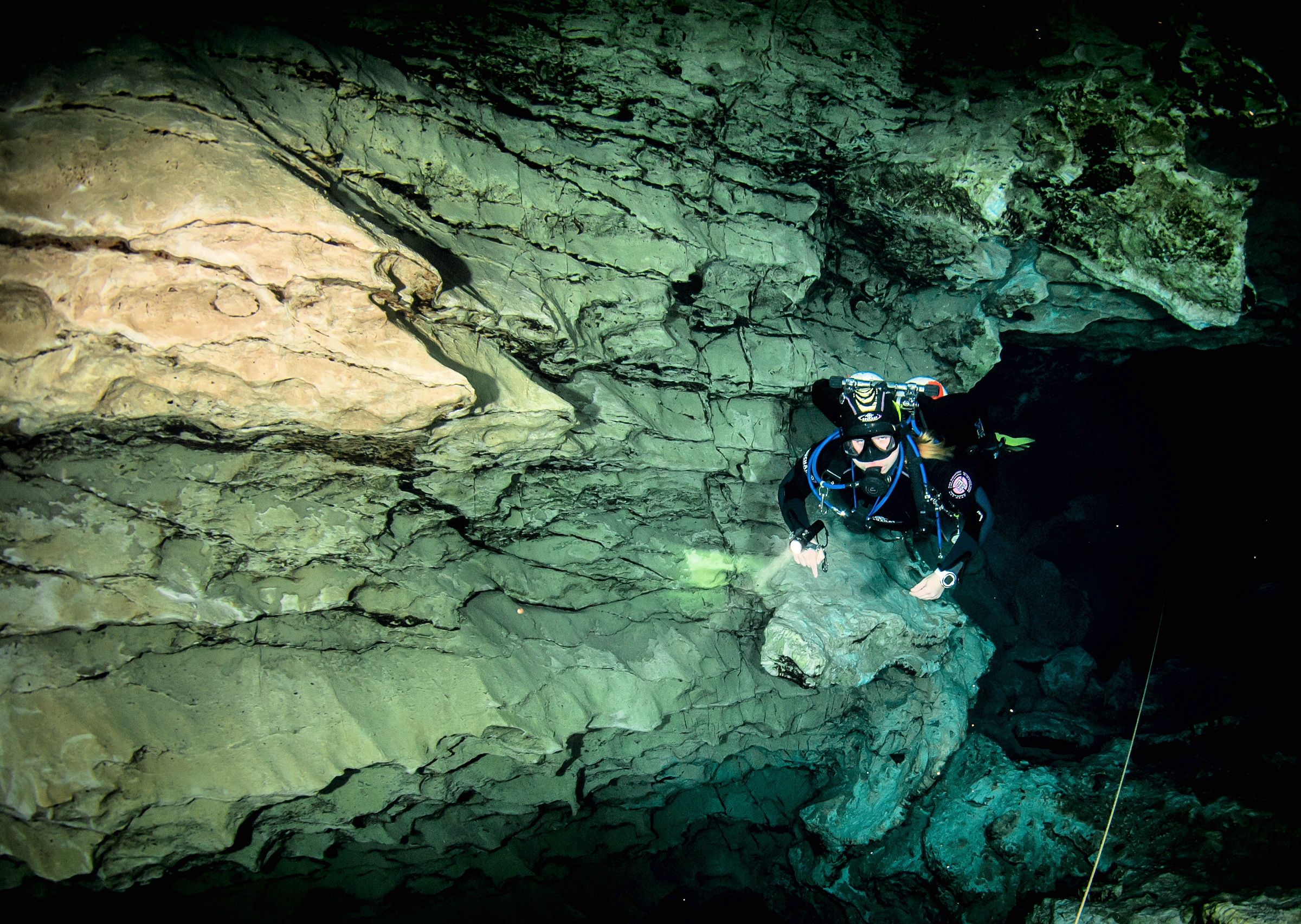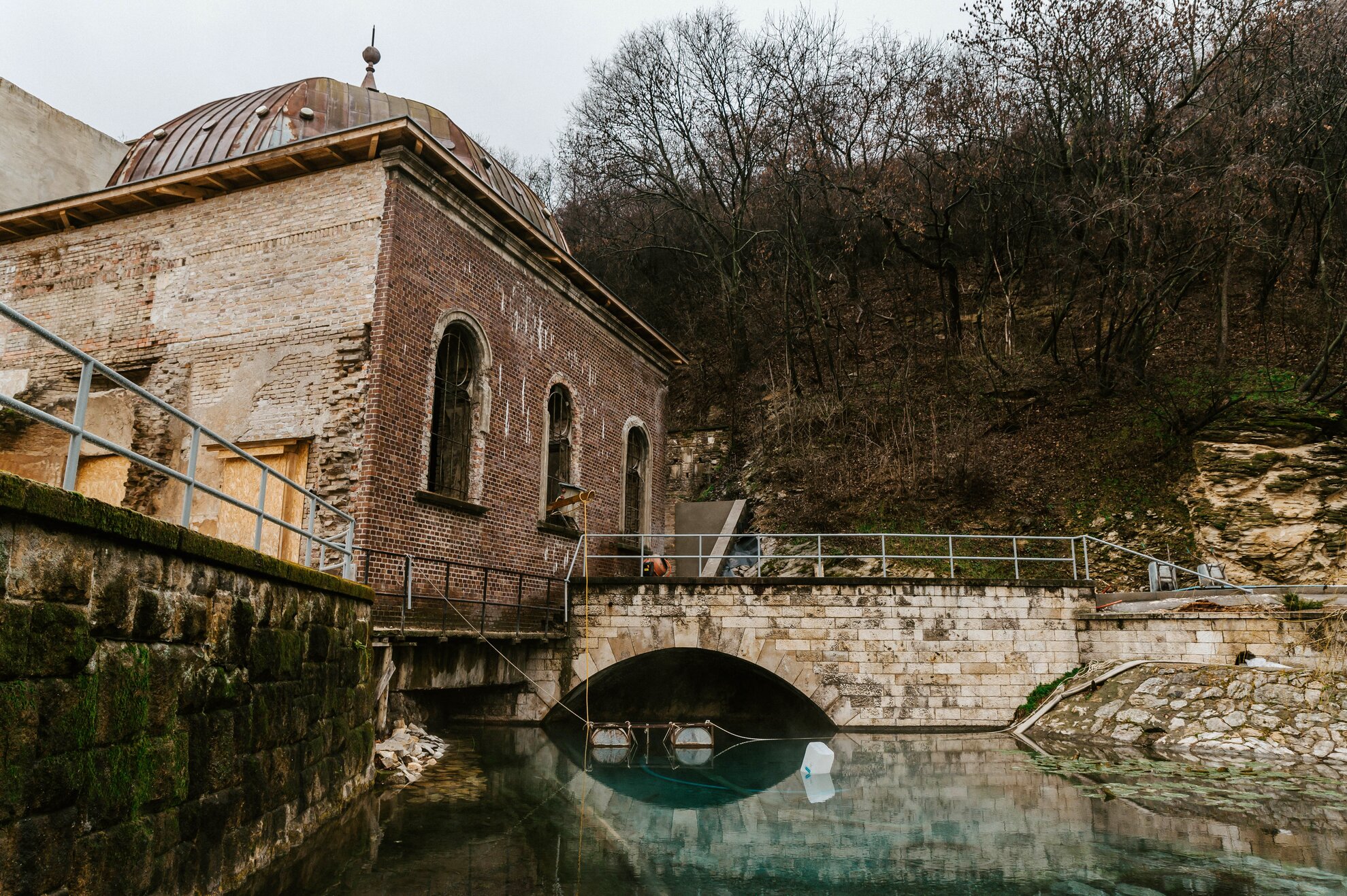
From the street, you see only the crumbling old bath house, next to which lies Mill Lake, so named after the gunpowder mills operating in the area in the Middle Ages. These were fed by hot springs from the Buda hills, which pump out 2,000-5,000 cubic metres of water per day, and which feed the Lukács Baths before eventually emptying into the Danube. When cleaning the water for the spa, workers find all sorts of rubbish in it – from construction debris to general garbage and even once, a bomb!
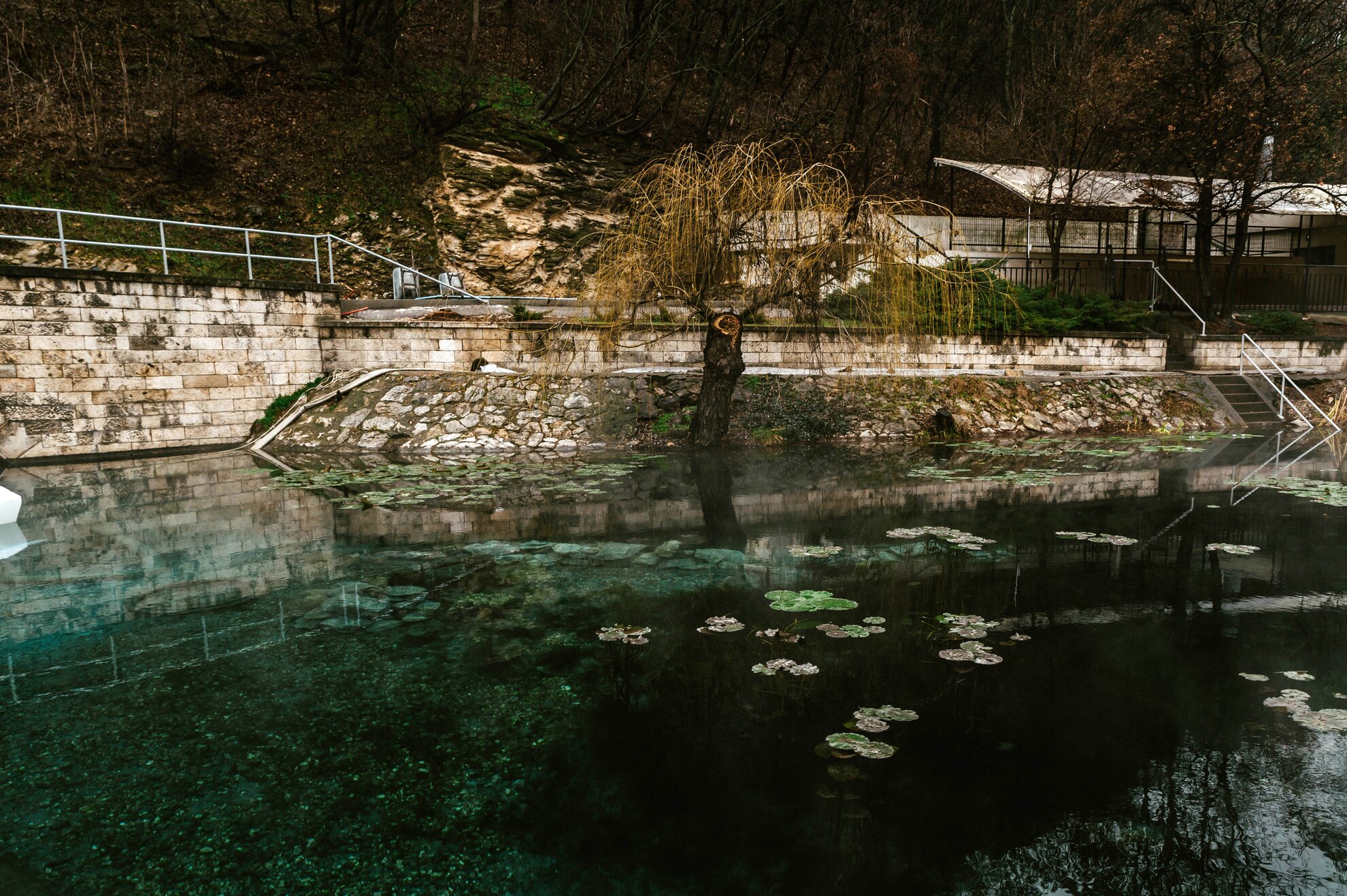
Beyond the former Népgőzfürdő, you find the entrance
to the János Molnár Caves. Being fed by hot springs, the cave system greets visitors with a pleasant 23 degrees and 85% humidity year-round.
The general public
cannot enter, as the caves are only open for researchers and licensed divers,
but for the sake of this article, plant manager Attila Hosszú let us explore. In
the reception area, we find bottles, diving equipment and various relics of
daily operations.
From here, a staircase leads down from the top of the cave to the surface of which – at first sight – appears to be only a few square feet of pond. But from here, long passages branch off deep underwater. The water here is crystal clear, yet the depth is menacingly dark – you definitely need a stout heart and sound presence of mind to immerse yourself!
The caves were first discovered in 1859 by János Molnár. A determined pharmacist interested in the natural sciences, Molnár already guessed at that time that the mountain had a cave full of water in its interior, but it would take more than 100 years for the system to be fully explored.
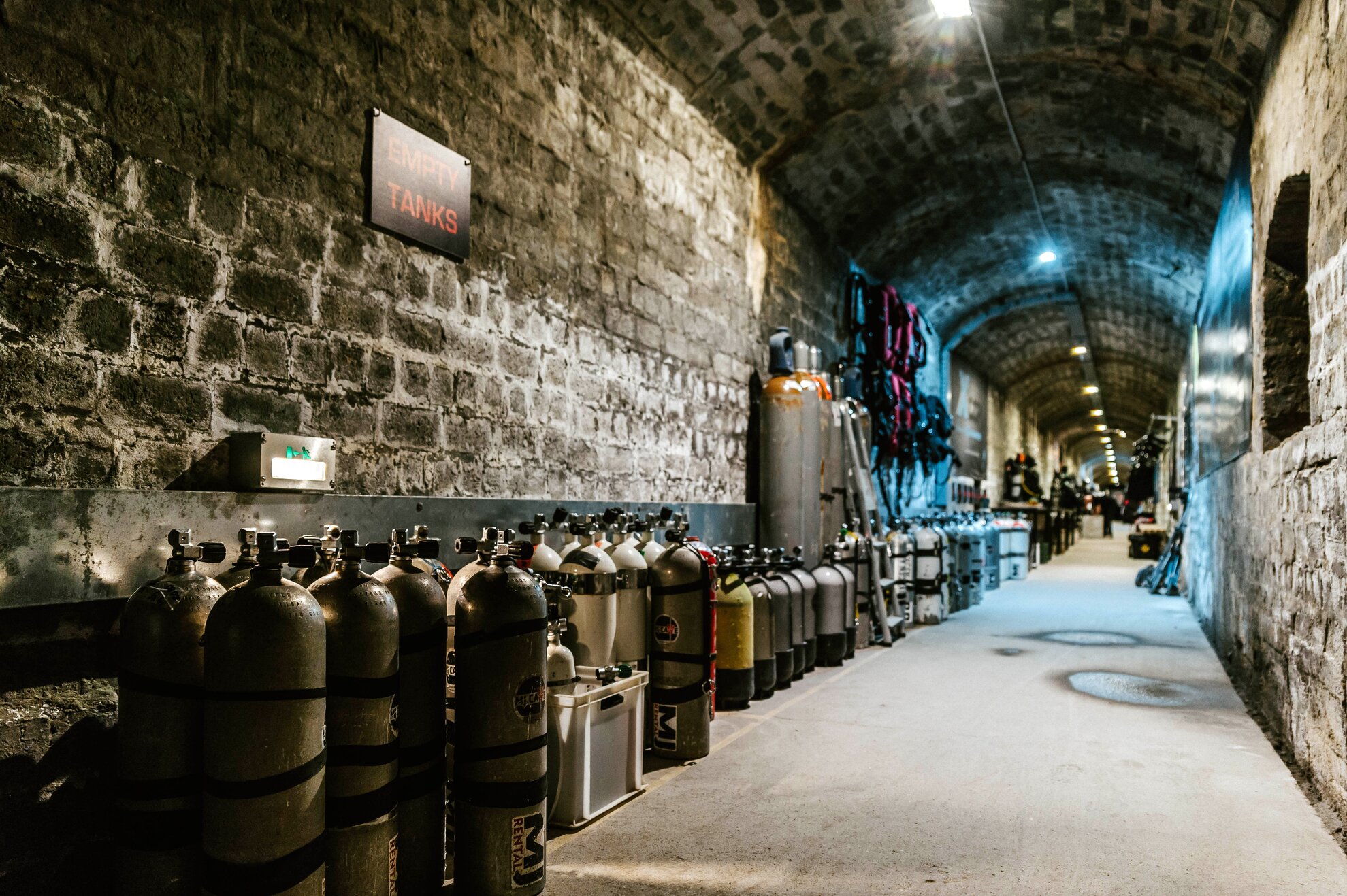
Research has been carried out in the caves since the 1960s, and the reservoir currently in use for supplying the nearby baths was first created in the 1970s. At the time, the government commissioned the Mining and Dredging Company to connect the waters to the Gellért, Rác and Rudas Baths underground.
From Elizabeth Bridge to the Gellért Hotel
Our companion explains: “At that time, a similar reservoir like this was created, only two metres wider, with a narrow rail running through it. If you start from Elizabeth Bridge and go in the direction of the Gellert Hotel, you can see the small windows looking under the mountain, and those connect to this route”.
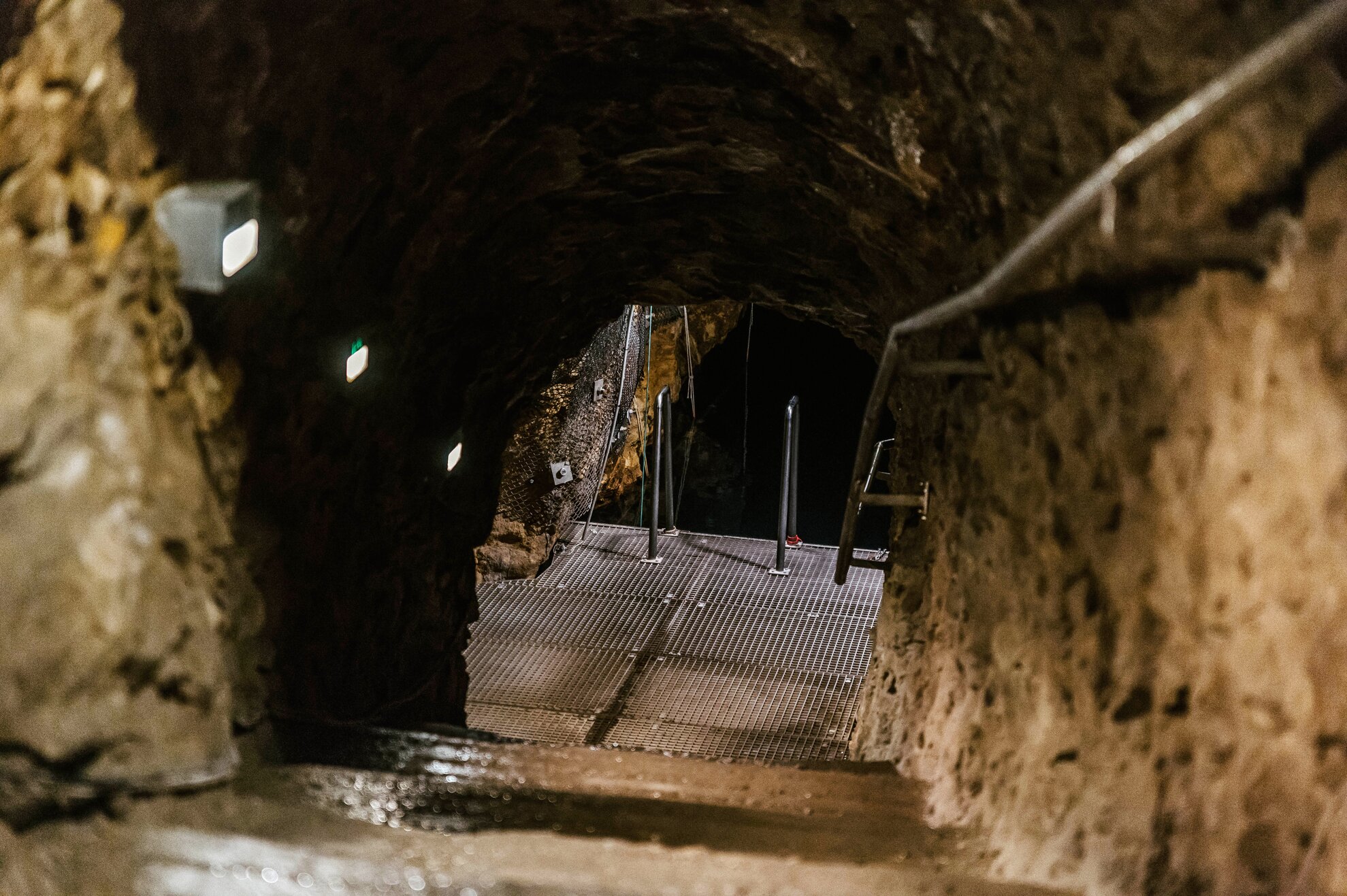
Money leftover from the project was intended to expand the SZOT Hotel at the top of Rózsadomb with a lift, so that the miners could spend their well-deserved rest as hotel guests, and access the baths. The facility was drilled in the '70s, but the work wasn’t completed, and the large-scale plans were not realised. Until 2008, this shaft was unused, and the cave could only be entered from the outside entrance.
Modern technical advances in scuba diving have made mapping of the caves possible, and it was only in the early 2000s that researchers were able to penetrate uncharted passages, increasing the 1982 assessment of 450 metres to an astonishing six kilometres. At their deepest parts, the passages measure 90-100 metres, most at least 30 metres deep.
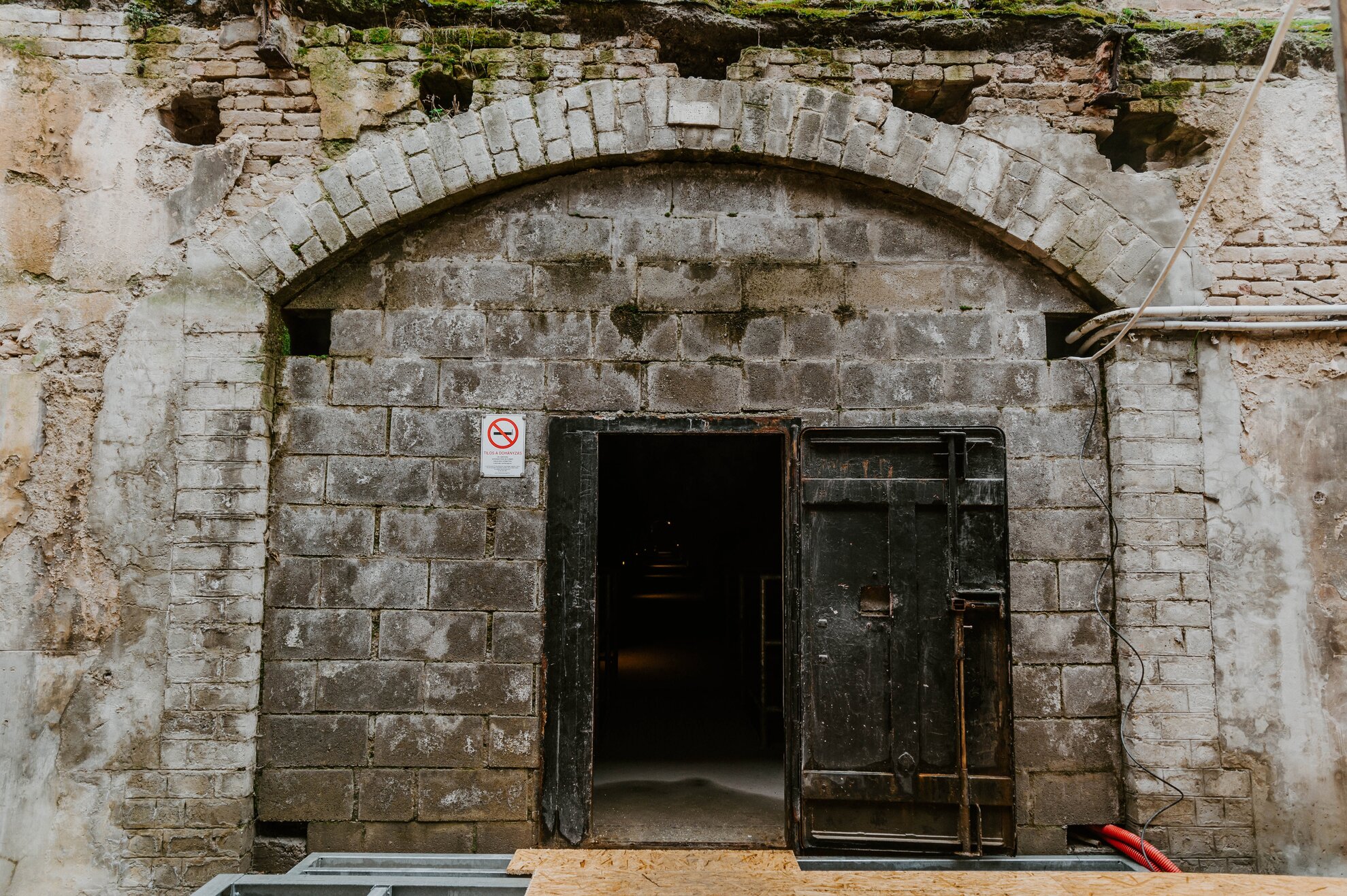
It is hard to say how much of the caves remains to be discovered, but based on measurements of water flow, it is suspected that there is another outflow from the caves towards the Danube. Various fossils, shells, shark teeth and unique fauna are also hidden in the cavities of the caves, forever filled with dark, warm karst water.
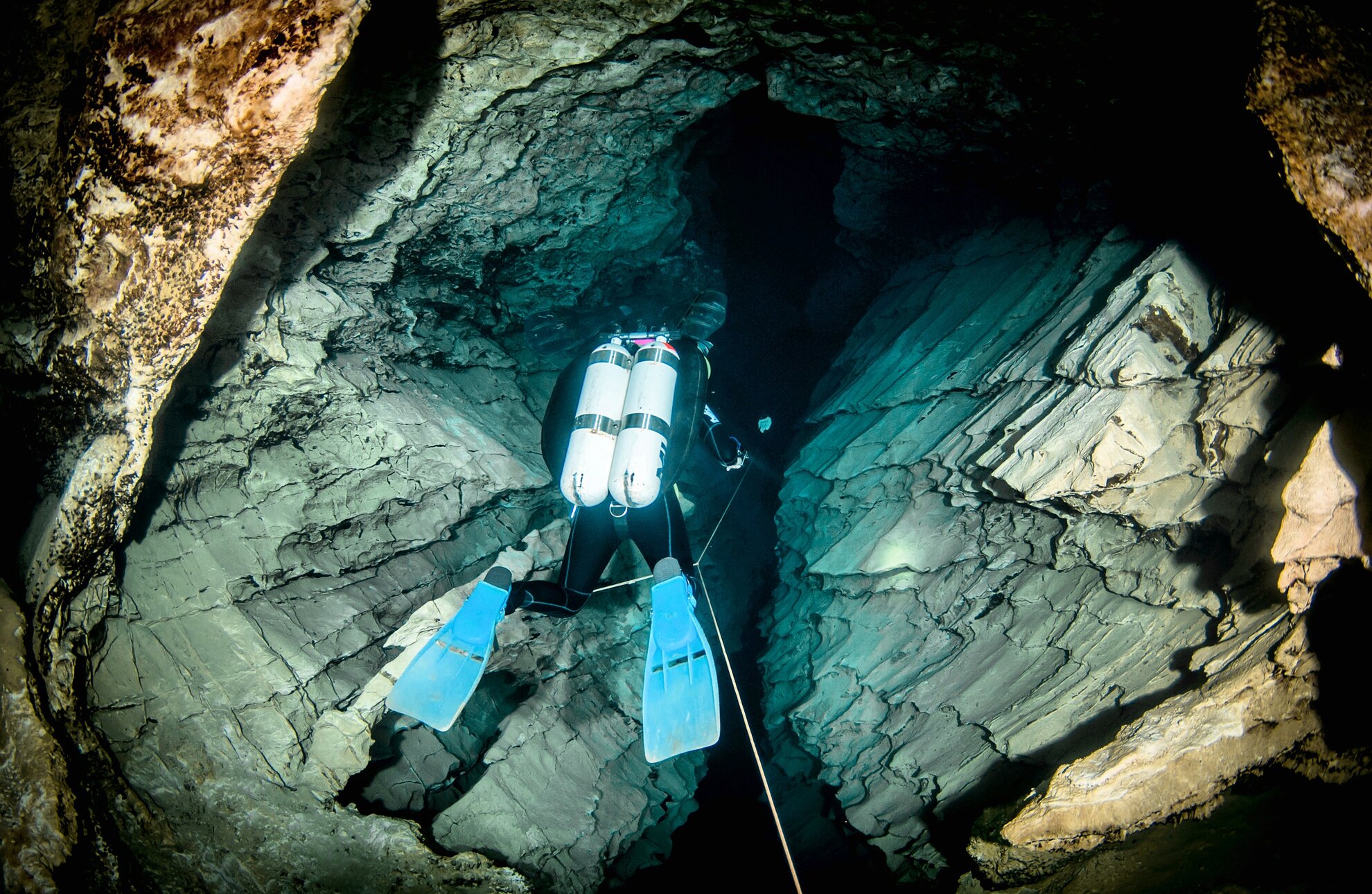
In addition to biological, hydrological and geological research, the number of visitors arriving for diving purposes is also significant. Trained cave divers come from Japan, Australia and all over Europe to plunge into the inky depths. Only 30 dives a day are allowed, as the cave is protected as a nature reserve – and during coronavirus times, the caves are closed to everyone.

“There are larger cave systems in the world than János Molnár Cave,” says our guide, “but none with its design anywhere”. Recently, the cave surroundings were landscaped, paved and gated. On the other side of the lake, to the right, is the old Malomtó bistro building, currently unused. Cavers hope to see it turned into a service room, to be used as a diving base.
